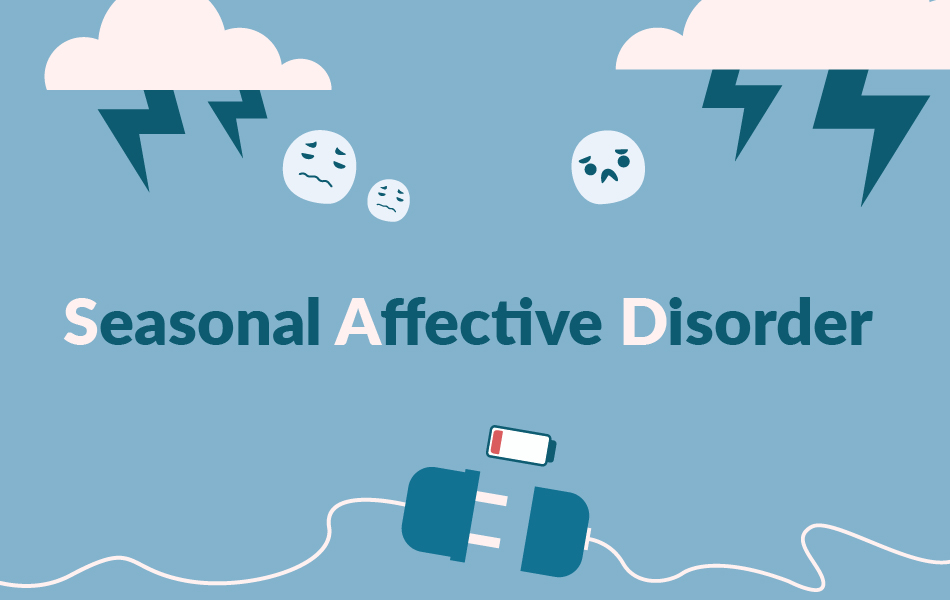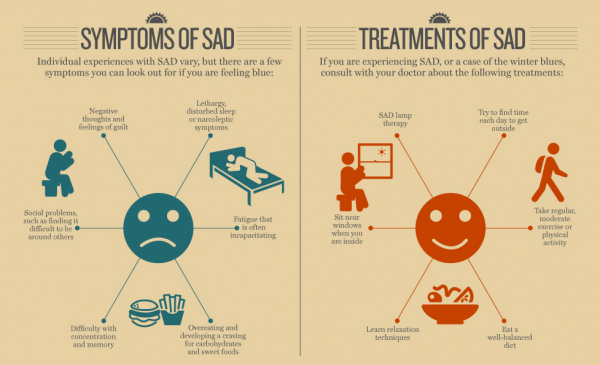
Seasonal depression syndrome (SDS) is a specific form of depression that occurs at certain times of the year, usually in the fall and winter. It is a mental health disorder characterized by recurrent episodes of depression at appropriate times of the year. Seasonal depression syndrome is thought to be related to a lack of daylight, which can affect the levels of certain brain chemicals, such as melatonin, which regulates sleep, and serotonin, which affects mood.
Who is at risk?
Seasonal depressive syndrome usually begins in adulthood and the risk increases with age. Seasonal depressive syndrome is less common in people under the age of 20. It has also been observed that women suffer from this disease more often than men. This may be related to hormonal factors, genetic aspects or environmental factors. Geographical location can also play a role; living further from the equator, where seasonal changes and daylight hours are more pronounced, may increase the risk of seasonal depressive syndrome. Also, people with a family history of seasonal depression or other forms of depression may be at increased risk. It is also important to emphasize that this syndrome is not just a simple misunderstanding of the mood in the cold season; it is a serious health disorder that can significantly affect a person's quality of life and daily functioning.
Reasons
The causes of seasonal depressive syndrome are complex and are thought to be related to a lack of light. Shorter days and less sunlight in fall and winter can cause internal biological disturbances. This can disrupt circadian rhythms, which are important for the normal functioning of the body. In addition, less sunlight can reduce the brain's production of serotonin, a hormone that positively affects mood. Another important factor is increased levels of melatonin, a hormone that promotes sleep and is released in the dark, which can make a person feel sleepy and less energetic.

What are the symptoms that indicate you may have seasonal depressive syndrome?
The symptoms of seasonal depressive syndrome are similar to those of regular depression, but occur in a seasonal cycle.
The main symptoms include:
- A constant feeling of sadness, despair
- Lack of energy
- Drowsiness
- Social distancing
- Decreased interest in usual activities
- Decreased sexual desire
Irritability, anxiety, guilt, difficulty concentrating, reduced attention span, and problems with decision-making may also occur. Physical symptoms may include sleep disturbances, changes in appetite (especially sweets and carbohydrates), weight gain, and various somatic ailments such as headaches.
Symptoms of seasonal depressive syndrome usually begin in the fall or winter and decrease or disappear completely in the spring or summer months. However, there is a rarer form of seasonal depressive syndrome that occurs in the spring or summer and may be associated with different symptoms, such as decreased appetite and weight loss.
Treatment
Diagnosing and treating seasonal depressive syndrome requires careful medical evaluation, as symptoms may overlap with those of other psychiatric disorders. It is important to note the seasonal cyclicity of symptoms and other possible causes that may contribute to the onset of symptoms.
Treatment often includes the following methods:
- Exposure to sunlight. Spending time outside or near a window can help relieve symptoms.
- Light therapy.
- Psychotherapy. Cognitive-behavioral or interpersonal therapy helps to change distorted perceptions of self and environment. It can help improve interpersonal relationships and identify stressors and ways to manage them.
- Antidepressants. These prescription medications can help correct the chemical disorders that can cause emotional depression syndrome.
There are also steps you can take yourself to help ease your symptoms:
- Get help. If you think you may be depressed, see a healthcare professional right away.
- Set realistic goals for depression.
- Try to communicate with other people.
- Do what gives you pleasure.
- Exercise regularly.
- Eat a healthy and balanced diet.
- Avoid alcohol and drugs.

Seasonal depressive syndrome is a complex and still incompletely understood disorder, the main symptoms of which occur at certain times of the year, usually in the fall and winter. The disease affects both a person's mental and physical health, causing symptoms ranging from sadness and lack of energy to changes in sleep and appetite. Although the exact causes of seasonal depressive syndrome are still under investigation, lack of daylight and related internal biological changes are thought to be important factors.
Source of information:
- Johns Hopkins Medicine: „Seasonal Affective Disorder“.
# sezoninis depresijos sindromas






